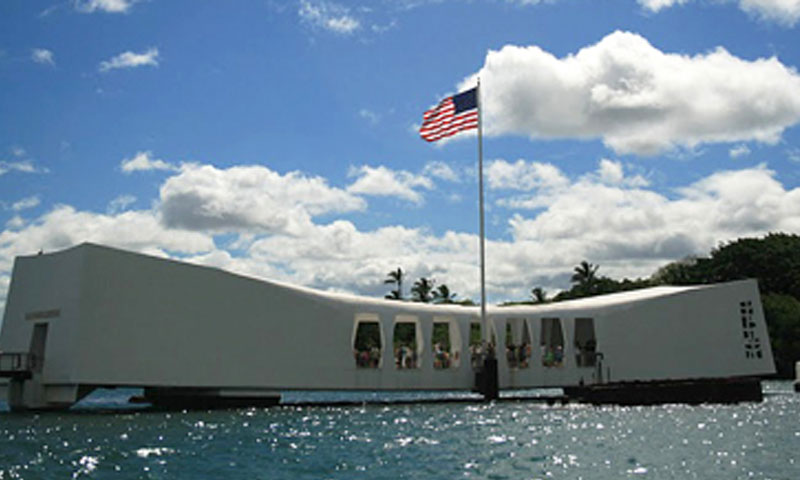Students in the Joint Executive Systems Engineering Management – Product Development Leadership Education for the 21st Century (SEM-PD21) degree program, an interdisciplinary leadership program designed for senior engineering and technical professionals, recently participated in a week of industry visits in Hawaii.
“The industry visits are designed to expose the students to the latest state-of-the-art concepts, tools and best practices, both private and public, in systems engineering, product development and business management related fields,” says SEM-PD21 Program Manager, Professor Wally Owen. “The industry trips play a key role in the student overall development to become future leaders and senior managers responsible for driving business growth through innovation, and become effective change agents at their companies and organizations.”
One of the key value propositions of the program is collaboration not only jointly within defense and across the services, but also with defense industry partners.
“The industry trip this year was particularly valuable for its outreach to non-traditional organizations,” says Professor Dave Olwell. “In addition to visiting traditional military activities such as the Air and Space Operations Center at Hickam Air Force Base and the Marine Forces Pacific (MARFORPAC) Experimentation Center, the students visited the Asia-Pacific Center for Security Studies, Sea Engineering, the University of Hawaii, and Hilo Hatties. These latter organizations provided excellent insights into the challenges that non-military organizations face.”
These visits offer students diverse perspectives on how various industries approach systems engineering. During the trip, faculty and students heard briefs that directly related to material they had just covered in their classes and provided insight into concepts that would be introduced in future classes.
“The industry visits provided a great mix of management and engineering insight covering the breadth of our Systems Engineering Management studies,” says student Air Force Capt. David 'Jud' Smith, Space and Missile Systems Center, Defense Meteorological Satellite Squadron, Sensors Flight Commander.
One of the key value propositions of the program is collaboration, not only jointly within defense and across the services but also with its defense industry partners. This trip provided a venue for the students to interact with each other both professionally and socially.
“The combination of the industry visits with the social interaction really helped cement the bond cohort-10 developed over the first year. It was also great to interface with cohort-09 and get a glimpse of what lies ahead,” says David W. Panhorst, Chief, Munitions Sensors and Guidance Technology (MS>) Division, U.S. Army Armaments Research, Engineering and Development Center (ARDEC) in Picatinny Arsenal, N.J. “Having faculty members participate provided a significant networking opportunity at the midpoint of the program.”
“The interactions between faculty and students also allowed several faculty to reach agreements with first-year students on thesis topics and advisors, and for second year students to work face-to-face with advisors on completing their theses,” says Olwell. “The trip was extremely worthwhile and extremely well executed.”

In addition to touring several DoD and industry facilities, the group of distance learning students also visited the USS Arizona Memorial, the final resting place of more than 1,100 Sailors who lost their lives on the Arizona on the December 1941 attack on Pearl Harbor.
Planning and execution of the trip was no small task. The Naval Postgraduate School’s Center for Educational Design, Development, and Distribution (CED3) was dedicated to ensuring that students received a high caliber experience and seamless organization through many hours of careful planning.
“The administrative team coordinated funding and travel arrangements, planned social events and executed contracts with numerous agencies involved in trip,” says Heather Rougeot, CED3 Assistant Student Coordinator. “The student services team compiled a list of suggested industries to visit and worked directly with selected sites to make the necessary arrangements for access and presentations.”
CED3 team also provided participants with exceptional support through travel documentation processes, detailed communications about logistics, requirements and frequently asked questions, as well as in person and 24-hour on call support throughout the duration of the trip.
“The CED3 team put together an excellent itinerary including social activities that allowed students and faculty to interact in a professional, yet relaxed environment,” says Smith.
“There were lots of formal and informal opportunities for students to meet and share ideas. The social events allowed students who were nearing the end of the program to share their experiences and best practices with the newer cohort,” adds Rougeot. “They also had opportunities to talk with one another about the specific challenges they face day to day in their own jobs, in addition to how they might take what they were learning and successfully apply it to their work back home.”
SEM-PD21’s one-of-a-kind industry visits continue to exceed expectations. These annual trips will continue to play a key role in the development of future student cohorts.
“I believe experiences gained and the relationships established among these students pays great dividends to the students themselves, their organizations and DoD not only during the program but well into the future as each graduate climbs their respective corporate ladders,” says Owen. “The long-lasting relationships established and knowledge gained by the students will help improve the way defense does business. I guarantee it!”
Mike DiFranco is the Director of Marketing and Communications for the Naval Postgraduate School’s Center for Educational Design, Development and Distribution.

